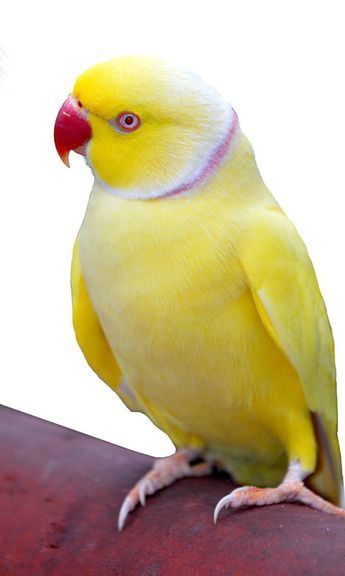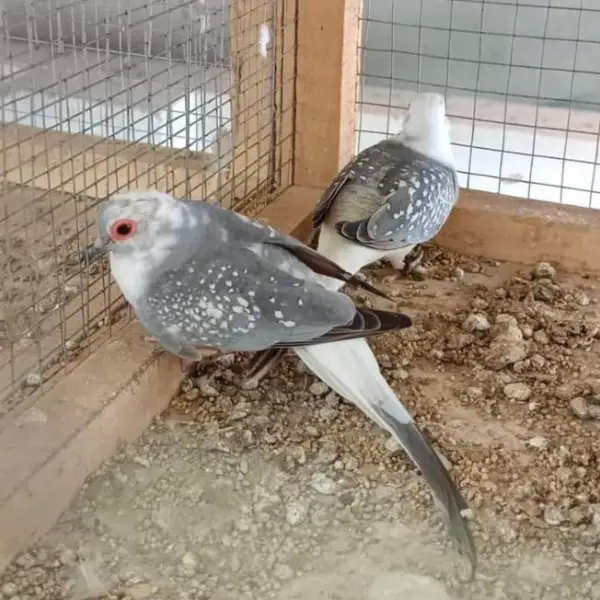Free shipping order over 20,000
Yellow Ringneck
₨ 280,000
- Scientific Name:
Psittacula krameriSize:
Typically ranges from 40 to 42 cm (16 to 17 inches) in length, including the tail.Weight:
Around 115 to 140 grams (4 to 5 ounces).Color:
- Body: The Yellow Ringneck Parrot features a bright yellow plumage that can vary from a soft, pale yellow to a more intense, vibrant yellow.
- Neck Ring: Males have a distinctive black and yellow ring around their neck, which is often more pronounced than in other color variations. Females and juveniles generally lack this ring.
- Beak:
Bright red, strong, and slightly curved, ideal for cracking seeds and nuts. - Eyes:
Yellowish-white with a dark ring around them.
Legs and Feet:
Grayish in color, with zygodactyl toes (two toes facing forward and two backward), aiding in effective climbing and grasping.
Important Keys:
Habitat
Distribution:
Native to Africa and South Asia, particularly in regions like India, Pakistan, and sub-Saharan Africa. The yellow coloration is a result of selective breeding in captivity.
Environment:
They inhabit various environments, including forests, woodlands, and urban areas. In captivity, they require a spacious cage with plenty of perches and toys for mental stimulation.
Diet
Primary Food:
In the wild, their diet consists of seeds, fruits, nuts, and berries. They also feed on grains and crops.
Captivity Diet:
In captivity, they should be provided with a balanced diet of high-quality pellets, fresh fruits, vegetables, and occasional seeds. Fresh water should always be available.
Feeding Behavior:
Yellow Ringneck Parrots are active foragers, using their strong beaks to crack open seeds and nuts. They enjoy exploring their environment for food.
Breeding
Breeding Season:
The breeding season generally occurs from February to April, depending on the region.
Nest Location:
In the wild, they nest in tree cavities, often reusing the same site each year. In captivity, a nest box with appropriate bedding is essential.
Egg Quantity:
A typical clutch consists of 3 to 4 eggs.
Incubation Period:
The incubation period lasts approximately 22 to 24 days.
Fledging:
Chicks fledge around 6 to 7 weeks after hatching.
Lifespan
In the Wild:
Yellow Ringneck Parrots can live up to 15-20 years.
In Captivity:
With proper care, they can live up to 25-30 years.
Behavior
Social Structure:
Yellow Ringneck Parrots are highly social birds that often form large flocks. They are known for their strong pair bonds and, in captivity, require social interaction and mental enrichment.
Vocalization:
These parrots are very vocal, with a variety of loud calls and the ability to mimic sounds and speech. They are one of the best parrot species at imitating human speech.
Personality:
Yellow Ringneck Parrots are curious, intelligent, and playful. They are active and enjoy interacting with their environment, making them popular pets. However, their high energy and vocal nature require dedicated care and attention.
Related Products
-
-70%
Zebra Finch
₨ 5,000Original price was: ₨ 5,000.₨ 1,500Current price is: ₨ 1,500. -
-20%
Common Gouldian Finch
₨ 12,500Original price was: ₨ 12,500.₨ 10,000Current price is: ₨ 10,000. -
-20%
Red Eyes Bengalese
₨ 3,750Original price was: ₨ 3,750.₨ 3,000Current price is: ₨ 3,000. -
-21%
Euro Bengalese
₨ 3,800Original price was: ₨ 3,800.₨ 3,000Current price is: ₨ 3,000. -
-20%
White Zebra Dove
₨ 43,750Original price was: ₨ 43,750.₨ 35,000Current price is: ₨ 35,000. -
-42%
Silver Pied Dove
₨ 12,000Original price was: ₨ 12,000.₨ 7,000Current price is: ₨ 7,000. -
-20%
Crested Dove
₨ 43,750Original price was: ₨ 43,750.₨ 35,000Current price is: ₨ 35,000.
Sign Up for Exclusive Birds Care Tips and Offers from Phool Panchi
© 2024 Phool Panchi | Developed By v3Studio














Reviews
There are no reviews yet.